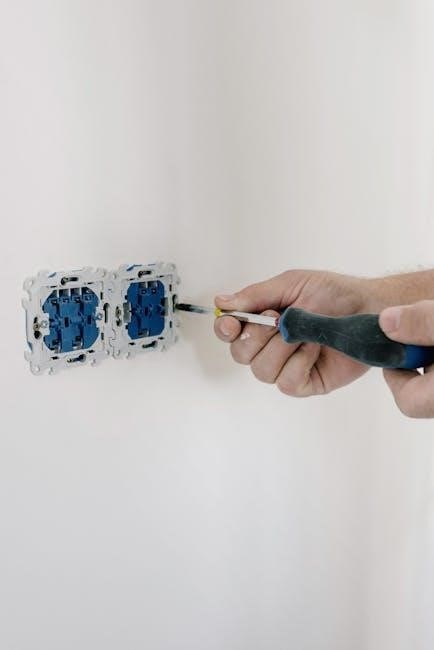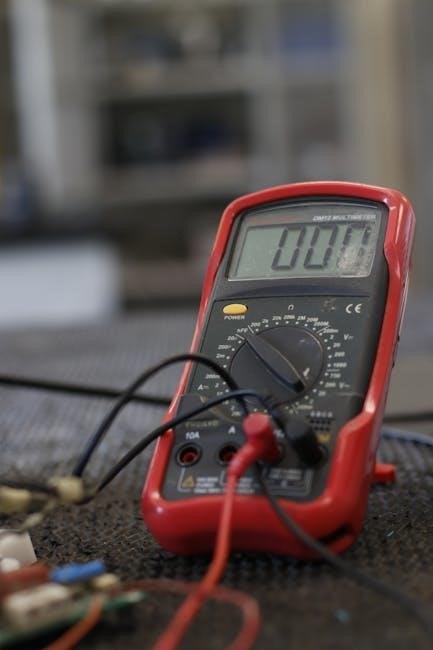4l60e manual shift wiring diagram
The 4l60e manual shift wiring diagram is a complex system, using
specific
components and solenoids to control shifting, with various sensors and signals, including resistors and diodes, to manage transmission operations smoothly always.
Overview of the 4L60E Transmission
The 4L60E transmission is a widely used automatic transmission in General Motors vehicles, known for its reliability and performance. It is an electronically controlled transmission, which means it uses a combination of sensors and solenoids to control gear shifting. The transmission is designed to provide smooth and efficient shifting, and it is capable of handling a wide range of engine torque and horsepower. The 4L60E transmission is also known for its durability and long lifespan, making it a popular choice for vehicle owners. In addition to its performance and reliability, the 4L60E transmission is also relatively easy to maintain and repair, with many replacement parts available. Overall, the 4L60E transmission is a well-designed and well-built component that plays a critical role in the overall performance and operation of a vehicle. With its advanced electronic controls and durable construction, it is an important part of many General Motors vehicles.

Understanding the Wiring Diagram
The 4l60e manual shift wiring diagram requires careful analysis of
electrical
circuits and components to ensure proper installation and function always works.
Locating the Transmission Connector
To begin working with the 4l60e manual shift wiring diagram, it is essential to locate the transmission connector, which is typically found near the transmission itself. The connector is usually labeled and color-coded to facilitate identification.
Using a wiring diagram, you can identify the specific pins and wires associated with the transmission connector, including the shift solenoids, sensors, and other components.
It is crucial to carefully examine the connector and its wiring to ensure that all connections are secure and not damaged.
By locating the transmission connector and understanding its wiring, you can proceed with the installation and configuration of the manual shift system, using the provided wiring diagram as a guide.
The transmission connector is a critical component of the 4l60e manual shift wiring diagram, and its proper location and wiring are essential for the system to function correctly.
Consulting the wiring diagram and taking the time to carefully locate and examine the transmission connector will help ensure a successful installation.
Manual Shift Conversion
Converting to manual shift involves
- specific
steps and components, requiring a thorough understanding of the 4l60e transmission and its wiring diagram to ensure a successful conversion always happens smoothly.
Full Manual Valve Body Conversion
A full manual valve body conversion is a complex process that requires careful planning and execution. The conversion involves replacing the automatic valve body with a manual one, allowing for complete control over the transmission’s shifting. This process can be challenging, but it provides a high level of customization and control. The conversion typically involves installing a new valve body, as well as modifying the transmission’s wiring and solenoid system. It is essential to have a thorough understanding of the 4l60e transmission and its components to ensure a successful conversion. The process can be time-consuming and requires patience and attention to detail. With the right tools and knowledge, a full manual valve body conversion can be a rewarding and effective way to upgrade a vehicle’s transmission. The conversion can also provide improved performance and fuel efficiency, making it a popular choice among car enthusiasts.

Controlling the Shift Solenoids
Using switches to control shifting, solenoids are managed through electronic signals, with
- specific
wiring and components, to ensure smooth transmission operations always and accurately.
Using Switches to Control Shifting
The process of using switches to control shifting in a 4l60e manual shift wiring diagram involves connecting the switches to the shift solenoids, allowing the driver to manually control the transmission’s gear shifts. This method requires a thorough understanding of the transmission’s electrical system and the wiring diagram. The switches are typically connected to the solenoids through a wiring harness, and the driver can control the shifts by flipping the switches. The use of switches to control shifting can be a cost-effective and efficient way to convert an automatic transmission to a manual shift transmission. The switches can be installed in a variety of locations, including the dashboard or the center console, and can be customized to fit the driver’s preferences. The wiring diagram is essential in this process, as it provides a detailed map of the transmission’s electrical system and the connections between the switches and the solenoids. By following the wiring diagram and using the correct switches and wiring, the driver can enjoy manual control over the transmission’s shifts. This method is popular among enthusiasts who want to upgrade their vehicle’s transmission without breaking the bank.

Additional Components and Considerations
Resistors and diodes are crucial components, requiring
proper
installation and wiring to ensure smooth transmission operation always.
Resistors and Diodes
Resistors and diodes play a vital role in the 4l60e manual shift wiring diagram, as they help to regulate the flow of electrical current and prevent damage to the transmission’s solenoids and other components.
The use of resistors and diodes is crucial in reducing the flyback spikes that can occur when the solenoids are energized, which can cause damage to the transmission’s control module and other electronic components.
By incorporating resistors and diodes into the wiring diagram, the risk of damage to the transmission’s electrical system is significantly reduced, ensuring reliable and smooth operation.
Proper installation and wiring of these components is essential to ensure that they function correctly and provide the necessary protection to the transmission’s electrical system.
The correct placement and orientation of the diodes is particularly important, as they must be installed in a way that allows them to effectively regulate the flow of current and prevent damage to the solenoids and other components.
Overall, the use of resistors and diodes is a critical aspect of the 4l60e manual shift wiring diagram, and their proper installation and wiring is essential for reliable and smooth transmission operation.

Power and Grounding
The 4l60e manual shift wiring diagram requires a stable 12V power supply and proper grounding to function correctly and safely always using specific wiring and connectors.
Understanding the 12V Power Supply
The 12V power supply is a critical component of the 4l60e manual shift wiring diagram, providing the necessary voltage to operate the transmission’s solenoids and control modules. A stable 12V power supply is essential to prevent damage to the transmission’s electrical components. The power supply should be connected to the transmission’s wiring harness, which distributes the power to the various solenoids and control modules. It is important to ensure that the power supply is properly grounded to prevent electrical noise and interference. The 12V power supply can be connected to the vehicle’s battery or an external power source, such as a power converter. The power supply should be capable of handling the transmission’s peak current demands, which can be significant during shifting operations. Proper wiring and connections are crucial to ensure reliable operation of the transmission’s electrical components. The 12V power supply is a key component of the 4l60e manual shift wiring diagram.
